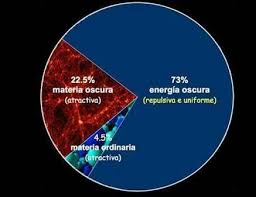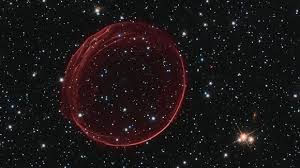TOWARDS NEW DISCOVERIES IN FUNDAMENTAL PHYSICS (II)
- planck
- Aug 13
- 6 min read
Cosmological measurements of the expansion of the Universe and dark energy
One of the most important and far-reaching cosmological discoveries of recent times was the discovery (corroborated by subsequent experiments) that the expansion of the Universe was accelerating. The scientific community was completely astonished. What hidden force or energy could cause such a dramatic effect? There are two leading candidates:
- The cosmological constant of general relativity: This constant represents the energy associated with the vacuum of space-time itself and acts as a repulsive force.
- A new scalar field with negative pressure: During cosmic inflation, a field called the "inflaton" with negative pressure caused a very brief exponential expansion of the Universe. Could such a field be the cause of this new phase of accelerated expansion?
While the first option could naturally be framed within the theory of relativity, the second option is no less plausible than the first: this process of accelerated expansion already occurred in the earliest moments of the Universe, and therefore the physical mechanism responsible (the physics of inflation) is part of our standard cosmological model. Determining the nature of the so-called "dark energy" responsible for accelerated expansion is one of the greatest challenges in fundamental physics and cosmology, and numerous present and future experiments are underway to address this question.
Furthermore, the nature of dark energy can be used to test our most advanced theories of quantum gravity: the second option is clearly favored by string theory, to the point that some physicists argue that discarding it would refute our best candidate theory for unifying quantum mechanics and relativity. The answer may be closer than we think: combining data from the Vera Rubin telescope and the Euclid satellite (expected in 2022) with those from the SKA antenna array (expected in 2027) could yield a limit on the value of |V´|/V < 0.16 (this ratio measures how quickly the potential of the new scalar field, also called "quintessence," rolls down the false vacuum "hill"). This value is practically irreconcilable with any model based on string theory (1)
Neutrino experiments
Neutrinos are possibly the most ubiquitous or "spooky" particles in the Universe: about 200 trillion of them from the Sun pass through your body in one second. Neutrinos are fermions (spin 1/2 particles) and always appear in two groups: particle-antiparticle and right-left. Fermions in which the particle and antiparticle are the same are called Majorana fermions, and when they are not, they are called Dirac fermions.
Many physicists believe that neutrinos are our best bet for discovering physics beyond the SM. In fact, there is already experimental data, such as the small mass of neutrinos, that require a modification of the "standard" formulation of the SM. One of the fundamental questions about these particles is determining whether they are Dirac or Majorana fermions. Let's analyze both possibilities:
1) Neutrinos as Dirac particles. If nature "chose" this option, then the four possible neutrino types of the "standard" fermion formulation would exist: left-hand neutrino, right-hand neutrino, and their two associated antiparticles. Dirac neutrinos obtain their mass according to the following scheme:

This possibility raises several problems: it doesn't resolve the matter-antimatter asymmetry in the early moments of the Universe, it doesn't resolve the hierarchy problem (the enormous energy difference between quarks and neutrinos), or the problem of "accidental" lepton-antilepton symmetry. For this reason, many physicists hope that nature has opted for the next best option.
2) Neutrinos as Majorana particles. If nature opted for this option, then neutrinos and antineutrinos are the same particle. This would grant these particles a surprising ability: neutrinos could annihilate each other. But why do many physicists prefer this option? The answer is that it could solve the problem of the primordial matter-antimatter asymmetry, it would explain the small mass of neutrinos, and, most importantly, it would imply the existence of a new scale of fundamental physics. That is, if neutrinos are Majorana neutrinos, then new physics must exist beyond the SM. This is because Majorana neutrinos obtain their mass from the following diagram:

In the center of the diagram, a new particle must be exchanged whose mass is associated with the new "delta" energy scale.
But, how can we know if neutrinos are Dirac or Majorana neutrinos?
Conventional beta radiation consists of the nucleus of a radioactive atom emitting an electron and an electron neutrino. This is because a neutron in the nucleus converts into a proton, or, in other words, a down quark converts into an up quark (transforming a proton into a neutron). If this happens in two different nuclei, we have what is known as double beta decay:

If neutrinos are their own antiparticle then the following "strange" decay would be possible:

If we look at the center of the diagram, we notice something quite unusual: if neutrinos are their own antiparticles, then they can decay into each other. The decay energy would correspond to the energy of a new mL particle. This energy scale would represent a new level of physics beyond the SM. Numerous experiments are underway to try to detect this process, which would lead us directly to a new stage of fundamental physics.
In addition to this process, neutrinos offer us more possibilities to discover new physics as can be seen in the following figure:

Proton decay
The proton is found at the nucleus (literally) of all matter in the Universe: all known matter is made up of protons, neutrons, and electrons. In particle physics, there is a law called conservation of baryon number, which tells us that the number of baryons (quarks) must be conserved. The proton is composed of quarks and is therefore the most stable light composite particle: the permitted chain of decays ends with the proton. The proton cannot decay into lighter particles, since its decay would violate the conservation of baryon number. But what would happen if new symmetries existed, and therefore new particles beyond the known ones?
The key is that the breaking up of these new groups generates new bosons (very originally called X and Y bosons) and new representations that allow the number of baryons to not be conserved. In this way, the proton would no longer be the lightest stable baryon and therefore the proton must decay. The most probable decay process would be: p--pi0+e+. It must be realized that this decay is a process that involves very high energies and therefore this process would be a window to new physical processes beyond the SM.
This decay is being sought by neutrino experiments located several kilometers underground; the SuperKamiokande experiment has placed the lower bound on the proton's half-life at 10exp34 years! In the coming years, three experiments called DUNE, HYPERKAMIOKANDE, and JUNO will be launched, which will allow the exploration of proton decay at energies more than 10 times higher.
High-precision experiments
The detection of new quantum fields and new particles can be achieved through high-precision experiments. Today's technology has achieved a level of precision unimaginable just a few decades ago; for example, the precision of optical devices such as interferometers is equivalent to detecting atomic-sized displacements in the distance between the Earth and the Sun!
High-precision experiments can be classified into two groups: experiments based on effects at large distances and experiments based on atomic or molecular scales.
Long-distance experiments
These experiments are especially sensitive to new low-mass particles, as they can travel great distances. These particles would be associated with new long-range forces.
These experiments use a very massive body, such as the Moon, Earth, or the Sun, which serves as both a potential emitter of new particles and a high-precision receiver. These receivers are primarily:
- Torsion pendulums: Capable of measuring anomalous torsional forces
- Atomic interferometers: Capable of measuring anomalous accelerations
- Atomic clocks and spectroscopy measurements: Capable of measuring anomalous frequency shifts
- Magnetometers: To measure anomalous spin accuracies
Experiments at microscopic distances
These experiments are especially sensitive to new, high-mass particles that can only travel at atomic or molecular distances. These particles would be associated with new, short-range forces. These experiments are based on the observation of small deviations from theoretical predictions of certain magnitudes, mainly:
- Deviations in the spectra of atoms, ions and molecules.
- Violations of conserved quantities (charge-parity, etc.)
- Variations in measurements of the electric dipole moment of atoms and molecules.

The top left image shows the current limits for the interaction of a new scalar particle with a photon. The top right image shows the explored limits for PT symmetry violation in the interaction between an atomic nucleus and an electron via a new scalar particle.

The image above shows the limits explored for the interaction between a new pseudoscalar particle and an atomic nucleus.
There are currently a large number of experimental projects that could detect new particles beyond those predicted by the SM, and the expected improvements in sensitivity in the coming years significantly increase the probability of detection.
Conclusions
Virtually no theoretical physicist doubts that numerous new physical processes await discovery in the Universe around us. There is overwhelming evidence that the MS is not the definitive theory of fundamental processes and that it must be part of a more general theory. There are numerous candidates, such as GUTs or String Theory. In the coming years, we could gain valuable experimental clues that will help us uncover the deepest secrets of nature.
Sources: Neutrino physics , Neutrino mass models: a road map , The string theory swampland in the Euclid,SKA and Vera Rubin observatory era , Searches for new particles including dark matter with atomic, molecular and optical systems









Comments